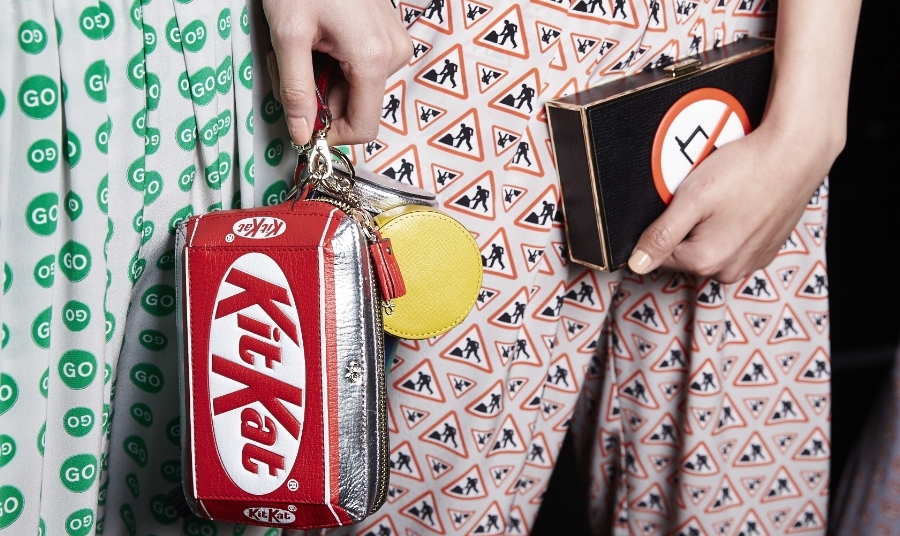
image: weibo
How much does a product’s shape define its brand? This is a question that has been posed in connection with the ongoing legal battles over the shape of the KitKat bar. Nestlé S.A., the Swiss food company that owns the KitKat brand, has been embroiled in a grueling years-long, multi-billion dollar, and multi-national fight over the protectability of the 3 dimensional shape of its KitKat bar. That trademark is one of the core assets of the 82-year old chocolate brand, which is said to bring in $32 between $43 million per year thanks to its 4-fingered candy bar
For the past 12 years, Nestlé – the largest food company in the world – has faced off against American rival Mondelez International by way of fights in the United Kingdom and separate battles before courts for the European Union.
It began in 2002 when Nestlé filed an application for registration with the European Union Intellectual Property Office (“EUIPO”) for the shape of its KitKat bar. Four years later, the EUIPO issued the registration and Nestlé was relishing its victory in the European Union. Aside from amassing individual trademark registrations for its famous chocolate bar across the globe, including in Australia, Canada, and South Africa, among other countries, the EU registration would significantly bolster any future attempts by Nestlé to prevent third parties from selling chocolate bars with a similar shape anywhere within the EU’s 28 member states.
Nestlé – which has long argued that the KitKat candy bar design maintains “distinctive character” (i.e., is well-known as being a product of KitKat) to serve as a trademark and thereby, deserves exclusive trademark rights – was pleased.
However, Nestlé’s celebration was cut short, when Mondelez – the owner of Kvikk Lunsj, a Norweigan candy company, and Milka, which was popular in Belgium, both of which were producing very similar-looking 4-fingered chocolate bars of their own – came knocking just one year later. In 2007, Nestlé’s American rival had initiated proceedings, in which it was asking the EUIPO walk back on its decision and declare the KitKat trademark invalid.
Not your average opponent, the Deerfield, Illinois-based behemoth known as Mondelez International, was – like Nestlé – one of the largest food and drink companies in the world, and the parties’ fight over whether Nestlé had been afforded a valid trademark registration in the EU stretched on until late last month when the Luxembourg-based Court of Justice of the European Union (“CJEU”), Europe’s highest court, upheld a lower court’s decision that Nestlé’s EU registration should be cancelled.
The CJEU affirmed a previous ruling, which found that Nestlé had failed to provide evidence that the KitKat bar shape had acquired “distinctive character” in all EU member states, a requirement in order for the shape to be afforded exclusive rights in the EU. In particular, the CJEU held that there was no proof that consumers in the EU states of Belgium, Greece, Ireland or Portugal would recognize a KitKat bar by its shape alone.
The case will now return to the EUIPO, which will review n 2012 decision in which it rejected an appeal from Mondelez.
All the while, both Nestlé and Mondelez have been sparring in the United Kingdom, after Mondelez decided to double-down on Nestlé and oppose an application it filed for the KitKat shape with the Intellectual Property Office of the United Kingdom (“UKIPO”) in 2010.
Shortly after Nestlé filed its UK-specific application, the application was hit a roadblock: An opposition from Mondelez-owned chocolate-maker Cadbury, thereby, spawning a separate legal battle that would similarly stretch out over a number of years. In May, the panel of judges for the U.K. Court of Appeal held that the shape of the KitKat is not distinctive enough to warrant a trademark registration in the UK, despite being one of the most popular chocolate bars in the UK and embodying a basic shape that has remained almost entirely unchanged since its launch in 1935.
In connection with the UK case, Nestle said that it “is disappointed by the Court of Appeal judgment and is considering next steps,” but there have been few – if any – developments. As for the still-pending EU matter, Megan Rae Blakely, an intellectual property professor at Lancaster University in England, says that it is “likely that, given the stakes, Nestlé will refile for their EU KitKat shape trademark using new criteria that proves EU-wide distinctiveness in line with the framework of this latest decision.”
In the meantime, the two fights “demonstrate how difficult it can be for a shape to acquire the necessary level of recognition and brand association” to achieve trademark protection, says Blakely. Moreover, they also serve to underscore the importance of the shape of the 4-fingered chocolate – distinctive or not – to the KitKat brand and the enormous value that it brings, value that would be strengthened by the added exclusivity that trademark registrations bring.
And if nothing else, the lengths that Nestlé is willing to go to win seems suggest that it believes that its KitKat brand is, in fact, defined largely by the shape of the product.











